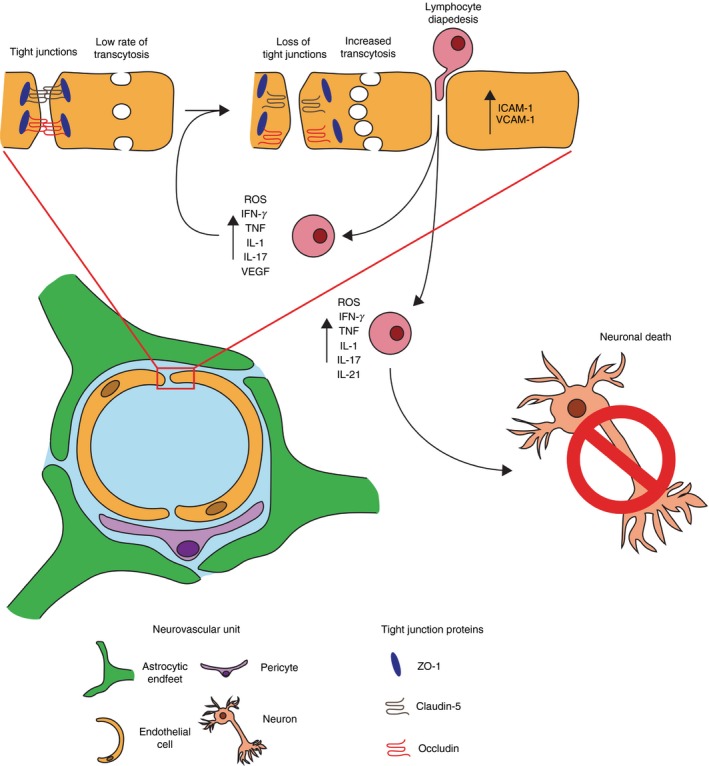Figure 3.

Schematic for how pro‐inflammatory T cells impact the neurovascular unit (NVU) following brain ischaemia. Following brain ischaemia, damage to the endothelium results in the loss of tight junctions such as occludin, ZO‐1 and Claudin‐5. This process facilitates increased lymphocyte diapedesis through paracellular and transcellular pathways. Upon entry into the brain parenchyma T cells prorogate ischaemic damage by releasing pro‐inflammatory factors and cytokines such as reactive oxygen species (ROS), interferon‐γ (IFN‐γ), tumour necrosis factor‐α (TNF α), interleukin‐1β (IL‐1β), IL‐17 and IL‐21, which can act by further damaging cells of the NVU or by damaging neurons directly.
